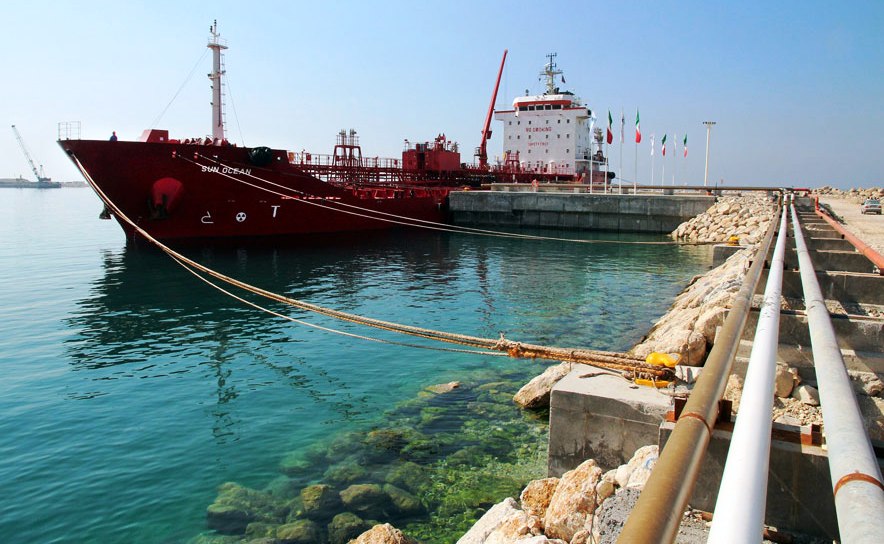During January-August period, on average, Iran exported 2.15 mb/d crude oil plus 500,000 b/d of condensate. Iran's crude oil exports hit a record in February with 2.3 mb/d.
Since two years ago, European companies have been vying for Iran's crude oil cargoes. The same companies that had brought to zero their oil purchase from Iran during years of sanctions are now receiving 40% of Iran's oil exports.
The Europeans are consuming 15 million barrels of oil, including 11 million barrels imported. Europe receives half of its oil imports via pipeline and the rest through maritime tankers.
Iran is making efforts to win a 4-million-barrel share in Europe's markets, delivered via high seas.
Royal Dutch Shell, France's Total, Italy's Eni and SARAS, Greece's Hellenic Petroleum, Spain's Repsol, and Hungary's MOL are among European buyers of Iran's oil. From January to August this year, they purchased on average 720,000 b/d of crude oil from Iran.
The demand for oil in Europe has been on a downward trend over the past decade.
China Breaks Record
China is Iran's biggest oil buyer. It did not halt its oil imports from Iran and increased its oil purchase after international sanctions were lifted on Tehran. The growing demand for oil in China has made this country a leading importer of black gold. China is currently consuming 13 mb/d of oil on average, 9 mb/d of which is imported.
The difference between China and European countries lies in their level of demand. Unlike Europe, China is witnessing an upward trend in oil demand. China's oil imports are forecast to increase by 2 mb/d soon, implying that Beijing is a profitable market for producers like Iran.
China was buying 600,000 b/d of crude oil from Iran from January to August this year. In August alone, China received more than 700,000 b/d of Iranian oil.
India, Growing Market
India is the second largest buyer of Iran's crude oil, just behind China. Like China, India continued to import Iran's oil even during years of sanctions. The US pressured New Delhi to halt oil purchase from Iran; however, this Asian giant regularly demanded sanctions waiver in order to meet its growing demand for Iran's crude oil.
India is one of the growing oil markets in Asia. Indian refiners purchased on average 450,000 b/d of crude oil from Iran during January-August period. The Indian refineries' highest rate of oil purchase from Iran came in July with a 500,000 b/d rate.
East Asia and Iran Condensate
In June 2012, South Korea announced it would stop buying crude oil from Iran due to the toughening of sanctions by Europe against Tehran. But that did not come true and Seoul continued to buy Iran's crude oil, albeit at a lower level. As soon as the sanctions were lifted, it did not hesitate to raise its oil imports from Iran.
South Korea is the largest buyer of Iran's gas condensate, buying 300,000 b/d of this product.
During January-August period, South Korea imported on average 100,000 b/d of crude oil from Iran.
Japan, another country in East Asia, has been buying 100,000 b/d of crude oil from Iran since the beginning of the year.
530,000 b/d of Condensate Exports
Natural gas extracted from gas reservoirs contains significant condensate contents. Condensate is a low-density, high-API gravity liquid hydrocarbon phase that generally occurs in association with natural gas. Its presence as a liquid phase depends on temperature and pressure conditions in the reservoir allowing condensation of liquid from vapor. The production of condensate reservoirs can be complicated because of the pressure sensitivity of some condensates. There is a risk of the condensate changing from gas to liquid if the reservoir pressure drops below the dew point during production process. Reservoir pressure can be maintained by fluid injection if gas production is preferable to liquid production. Gas produced in association with condensate is called wet gas. The API gravity of condensate is typically 50 degrees to 120 degrees.
Iran's condensate cargoes were parked on water when the country was under sanctions. After the lifting of sanctions, Iran started selling condensate. The country had around 75 million barrels of condensate parked on water when the sanctions were removed. Iran has since sold out the condensate which is highly demanded both in the country and abroad. Bandar Abbas Gas Condensate Refinery in southern Iran is fed by condensate to produce gasoline.
For the first time the National Iranian Oil Company (NIOC) can claim that it has no more stocked gas condensate to export. Exactly a year ago, 50 million barrels of condensate were parked on water.
Iran sends more than half of its condensate production to South Korea. Last August, Seoul bought 530,000 b/d of Iranian condensate.
Courtesy of Iran Petroleum


Your Comment